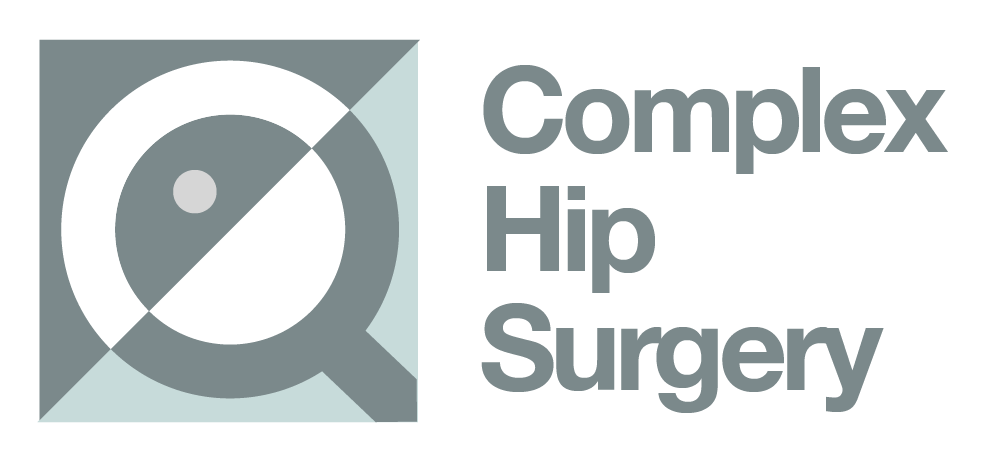CASE 33: Revision for infection using a non-modular long femoral stem
The Story
“This patient was a female aged 80, with a previous right metal on metal Corail/Pinnacle THR and left TKR.
She was referred to our metal on metal service due to severe weakness in her right hip abductors.
This was on a background of a previous infection in the implanted joint with Streptococcus mitis. This was treated with IV teicoplanin followed by oral amoxicillin. At the time of her initial appointment, she was still taking a course of oral amoxicillin.”
The Investigation
On examination the patient had no pain in her right hip. She had a Trendelenburg gait and was Trendelenburg positive on the right side. Walking was very difficult for her, limited by weakness and not pain. All sensation was intact and she had an oxford hip score of 27.
Investigations of her complex situation were as follows;
Aspiration of the right hip joint – Antibiotics were stopped and aspiration occurred 2-weeks later. This failed to grow an organism
Inflammatory markers – CRP was raised at 44 with a normal full blood count
MRI and CT of the right hip – Results below
Bone infection MDT discussion – Advised for a 2-stage revision
Metal on metal MDT discussion – Also advised for a 2-stage revision
The Evidence
Pre-op radiographs These radiographs show a well fixed Corail/ Pinnacle right MoM total hip replacement. There is some destruction of the cortex around the greater trochanter on the right side.
Pre-op MRI demonstrates atrophy of her abductors however there was a tendon attachment present. It demonstrated pockets of fluid around the greater trochanter and in the subcutaneous tissues.
Pre-op CT scan Considerable osteolysis is noted in the proximal femur.
Pre-operative EOS imaging was completed to assess this patients THR pre-operatively. This helps the surgeon to plan the revision operation minimise the risk of leg length discrepancy post-op.
The Diagnosis
The diagnosis was a right metal on metal Corail/Pinnacle hip replacement with adductor muscle destruction. It is probably negative for infection.
The Plan
We planned a two-stage operation:
Treatment stage 1 is the removal of the femoral and acetabular components and the insertion of a cemented spacer.
Intraoperatively;
Posterior approach
Sciatic nerve protected
Significant damage to the soft tissues from metal debris
Hip fluid and capsule samples sent for microbiology and histology
Stem removal
Midas rex
Flexible osteotomes
Cemented C-stem inserted
Cup removal
AB/symmetry extractor
Cemented poly cup inserted
Savlon wash and closed in layers
Stage One Outcome
The AP and lateral post-operative radiographs show the C-stem spacer and poly liner, both of which have been cemented in using PMMA cement containing antibiotics. These remain in for 8-weeks.
Operation Stage Two
Treatment stage 2 involved the removal of the cemented spacer and the implantation of a RAS cup and long stem Corail.
Intraoperartively:
Old posterior incision used
GT had a fibrous non-union that had displaced
Femoral spacer and cement removed + femoral canal cleaned
Acetabulum exposed, cup and cement removed and reamed with a 53mm reamer to achieve good bleeding bone
54mm RAS cup implanted
2 screws to augment fixation
36mm liner
The femoral stem was then implanted.
Size 14 high offset long stem Corail
28x7 metal head
A polyethylene dual mobility bearing was inserted which achieved a good leg length, offset and a stable hip
GT repaired with fibre wire improving hip stability further
Washed with savalon and pulsatile lavage.
Closure in layers
Stage Two Outcome
Post-op radiographs taken one day after the procedure demonstrate adequate positioning of the long Corail femoral stem and the RAS acetabular cup.
3-month post-op radiographs show the implant is well positioned. There has been some slight avulsion of the greater trochanter but this is not affecting her mobility.
The Verdict
At three months’ post-op this lady was walking with the aid of a single crutch. The patient is very happy with her revision procedure.
Equipment planning was a key element of this treatment:
Plan A: removal from the top without osteotomy. Use the following: Midas Rex pencil reamer (more effective than k wires, however beware ease of exiting the femur); flexible osteotomes; extractor with slap hammer.
Plan B: extended trochanteric osteotomy. Use standard saw, then reciprocating saw, then midas rex for distal corners, then 2 large osteotomes to lever open the bone. 3 cables will be needed and a trochanteric plate may be needed.
At least 2 weeks is required between stopping antibiotics and doing a hip aspiration.






































































